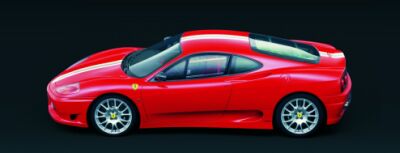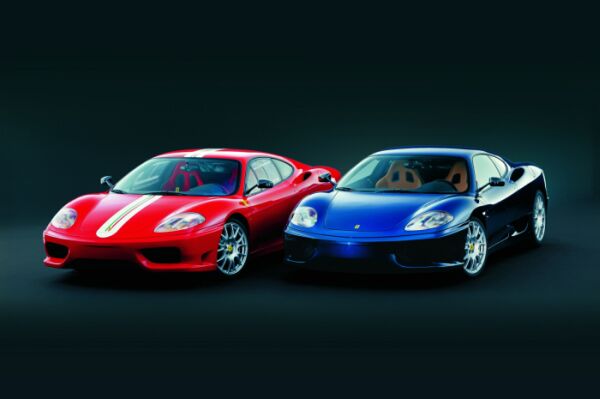| introduction
Everyone knows what a Ferrari
is. Whether it's a racing car or sportscar for the road, a Ferrari is always
a Ferrari, thanks to all the technical and emotional content that makes
it unique. But saying what a Ferrari should really be like is not so easy.
Looking back over past sportscars , such as the 166 or 250 GT and, somewhat
later, the GTO or F40, you can see they're exceptional thoroughbreds. Cars
focused entirely on performance in which every single gram of excess weight
was eliminated.
With these cars customer-drivers
like Chinetti, Marzotto, Gregory and Guichet won the 24 Hours of Le Mans,
the 12 Hours of Reims and the Mille Miglia or drove to victory in international
championships and even rallies, as was the case with Tognana and
Andruet and their 308 GTBs.
And so for years now Ferraris
have remained Spartan in terms of their trim, even though they had luxurious
touches like the use of top quality leather, above all red leather.
But by the early '90s this
way of conceiving cars seemed rather limited. Owning a Ferrari must give
all-round pleasure and so any decision to limit comfort, usability and
interior space excessively no longer made sense. The same went for colours.
The enormous success of Ferrari
cars over the past decade has shown that in their hearts customers really
wanted models like the 456 GT and 550 Maranello (and today's 575 M Maranello),
or the 355 and, later, 360 Modena eight-cylinder models. Cars that customers
could personalise by choosing from a wide range of accessories and where
the choice of colours offered rose to 16 (but in fact any exterior colour
was available on request, and the same went for interior trim too).
Ten years on, this progressive
mutation has now given way to a certain feeling of nostalgia. Nostalgia
for a Ferrari with no frills, which models like the F50 and Enzo have continued
to express even though they were produced in limited runs.
With the Challenge Stradale,
Ferrari again proposes the very essence of a racing car. Every feature
that in no way improves performance and safety has been reduced to the
minimum or eliminated. It's even possible to have sliding windows, last
used on the F40. The end result is an extremely lightweight, fast sportscar
, with a true racing-style set-up and impeccable handling.
A model offering top-level
performance that incorporates experience gained over the many thousands
of kilometres covered by drivers in Challenge Championships throughout
the world and advanced testing with the 360 GTs that have participated
in the FIA GT World Championship.
There's a choice of two Challenge
Stradale versions: a more extreme version with racing seats and sliding
windows, and another, fitted with lighter, wrap-around, leather seats and
wind-down windows.
the
concept
The new Ferrari Challenge
Stradale lines up alongside the 360 Modena and 360 Spider with the precise
aim of giving drivers the performance and feel of a true racing car for
road use.
This aim meant Ferrari technicians
gave exclusive preference to Ferrari Challenge and 360 GT racing-type solutions
for all aspects of the car and every single performance parameter, the
combination of which gives this car its highly individual character.
The starting point was aerodynamics,
where the aim was to obtain increased vertical load, or downforce (which
gives more speed when cornering rather than a higher top speed), followed
by all the vehicle-specific features (transmission, set-up and braking,
in particular the introduction of carbon-ceramic brakes as standard). And
finally, that determining factor for all racing cars - achieving the lowest
possible weight.
In fact the car's drastic
weight loss is one of the most significant achievements of the Challenge
Stradale project: the weight was reduced by incorporating racing
solutions for every single one of the car's components, in addition to
the benefit of using only aluminium to build the chassis, just like the
other 360 models. |


